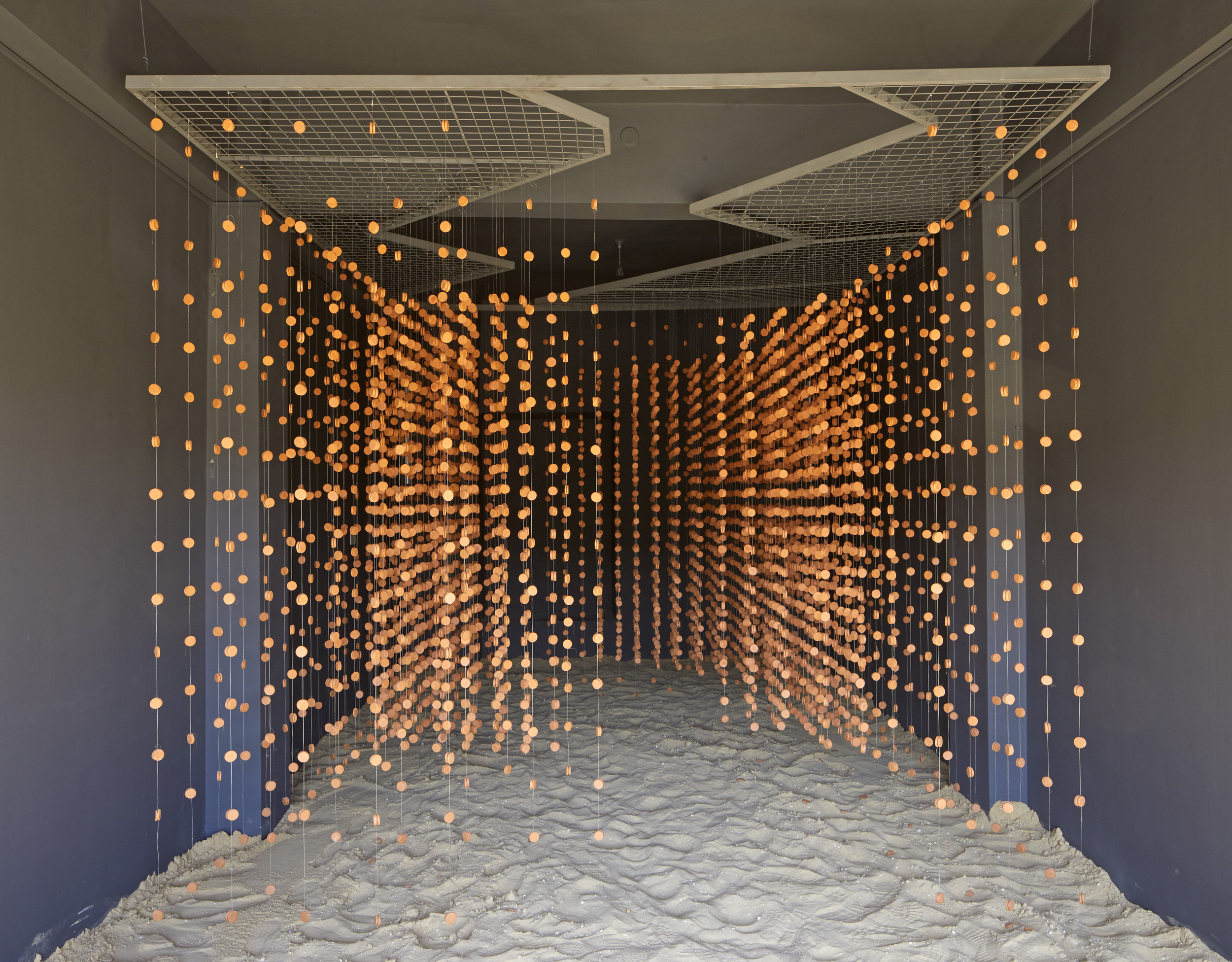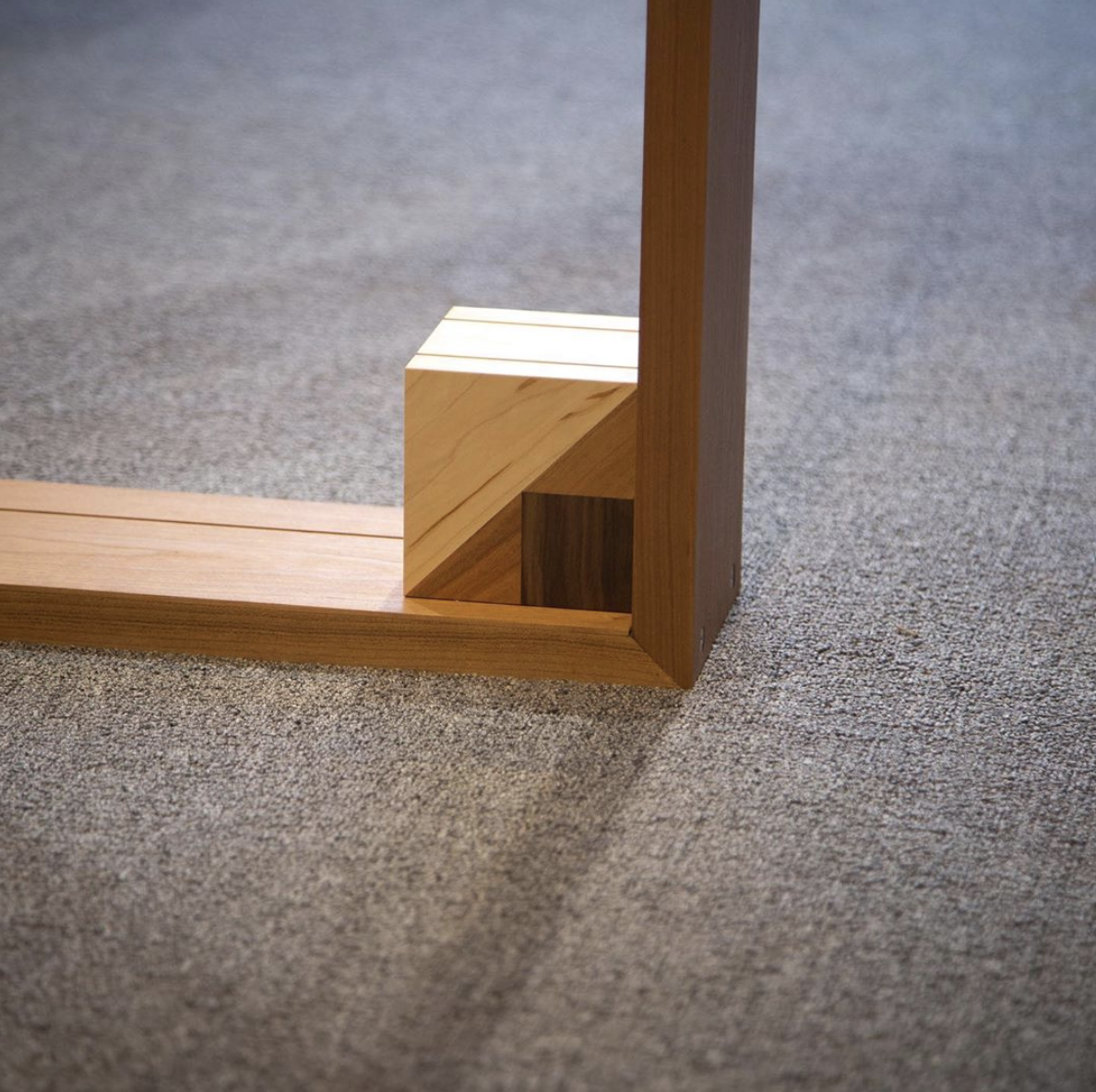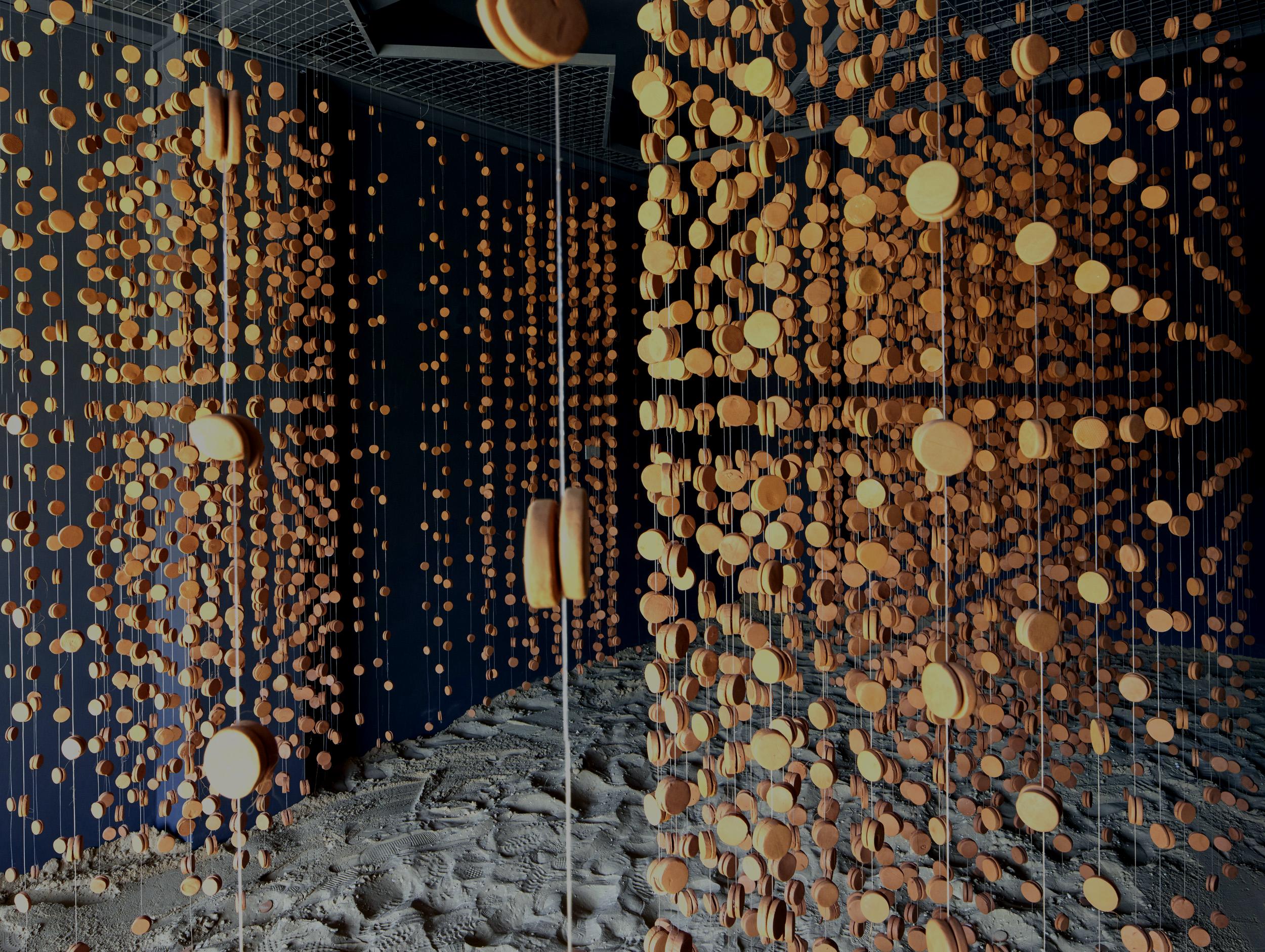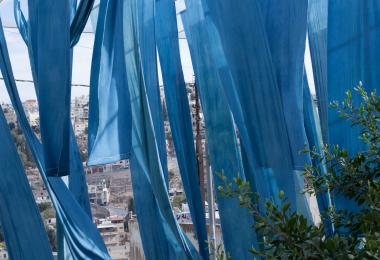The Crafts District
Craftspeople from across the country come to the capital Amman to showcase work developed uniquely for Amman Design Week’s Crafts District.
This year’s showcase, taking place at the Kabariti Village, brings back the craftsperson-to-street relationship, opening up five side-street shops and allowing visitors to engage with craftspeople willing to share their traditional techniques and skills with the public.

Beginning with the south of Jordan, Petra National Trust works with communities in Petra on clay products. While their products can be found on display at their space in Jabal Al Lweibdeh (Beit Yaish), at the Crafts District, they have collaborated with Arini on a unique installation reminiscent of the siq of Petra, with clay work done by Cambridge School.

Moving Northwards, we encounter the women of Ghor Al Safi, who have made a name for themselves for the natural dyes they use in their textile products. ‘Safi Crafts’ have also collaborated with Arini this year on a large scale installation titled ‘Nila Canopy’ at the entrance of the Kabariti Village, showcasing the pure unique color of the indigo plant from which they extract their dyes.

Closer to Amman are the ladies of Iraq al Amir, who are back for the third year showcasing their work in paper and ceramics, also with the use of natural dyes from plants found in their region.
Furthermore, coming from six women’s associations and several cities in the North and East of Jordan, including Zarqa, Azraq, Ajloun, Wadi Rayyan, and Umm El Jimal, and Amman, are the products produced by Irth Collective. On display are several non-food, agro-traditional handicrafts (soapmaking, carving in basalt stone, and pottery) developed by local and international designers and artisans of the collective. The work was done through a project financed by the Austrian government and implemented by UNIDO.


Finally, in an interactive showcase organized by Turquoise Mountain, which will be built over the course of the nine days. The piece illustrates the possibilities of crafts, patterns and materials intersecting, while also creating a space for conversation between artisans, designers and the general public.




